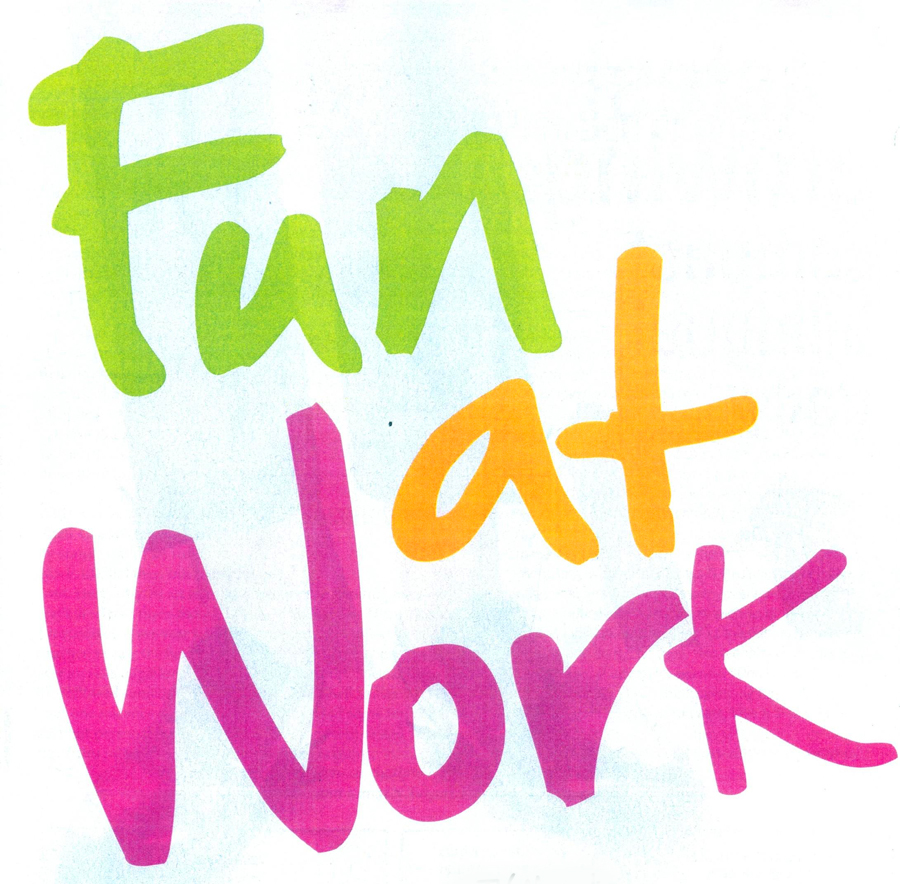Benefits
Playing It Forward: The Benefits of Fun in the Workplace
Are you curious how companies like Google, Zappos, Southwest and others develop those winning workplace cultures, with such high productivity and profitability? Regardless of the industry, there is a common thread running through the highest ...
May. 19, 2015

To have fun or not to have fun? That is the question.
Are you curious how companies like Google, Zappos, Southwest and others develop those winning workplace cultures, with such high productivity and profitability? Regardless of the industry, there is a common thread running through the highest performing companies: the inherent or stated culture of fun. Among companies denoted as “great” in Fortune’s “100 Best Companies to Work For,” a whopping 81% of employees say they work in a “fun” environment.
If you look closely at the highly successful companies mentioned above, they incorporate fun into the fabric of their culture. Fun at work may not be the “silver bullet” that produces superior results on its own, but a workplace environment that prioritizes fun will rise above the competition. With stout leadership, dedicated management and strong company values, companywide fun can take you over the top.
Prioritizing fun in the workplace will have a direct impact throughout your company in a myriad of ways, but there are a few specific areas that can be highlighted.
Organizational Health
Everyone would agree that a healthy and happy employee is a more productive employee, right? Fun can be an important component of emotional wellness. Often, fun is used to encourage participation or bolster existing wellness programs. The attention on emotional intelligence in the workplace and its impact on the bottom line is rapidly gaining momentum. For most organizations human capital is the largest asset and the single largest expense. It seems like a natural place to focus considering it will have the largest impact on the bottom line. We have already seen the biggest advances in technology and those investments today are producing marginal returns and impact on productivity. The next revolution in the workplace is culture.
Productivity
Secondly, let’s explore productivity. Do you ever get a break? Are you expected to work 8-hours per day, straight with no breaks? Fun can offer great breaks and distractions (not wasting time), but true valuable break time. As an example, there is a national call and customer service center that offers its employees a unique schedule. They have broken up their average daily time commitment into on-phone time and quick breaks (dubbed “shorts”). These “shorts” are sprinkled throughout any of the call center employees’ days. They last 15-minutes or less, during which time, employees can play ping pong, take a walk outside, or do anything they please during that time.
Look at Google. They give their employees 20% of any given work day to simply take to do “what they want to do”. And no, that time does not have to be work related. Why? One reason is for the sake of productivity of their work force. They realize that their people are working hard. The breaks are meant to enhance productivity of employee on-time.
Relationships & Loyalty
Relationships and loyalty (sometimes retention) go hand in hand. A staggering 79% of companies believe they have a significant retention and engagement problem. The average cost of losing an employee ranges from 1 1/2 times salary to 4-times their salary, depending on the position. What about attracting the next generation of great talent? The tides are shifting and given the choice most people – especially millennials – will choose culture over pay. Culture and fun is a differentiator that will give you the competitive advantage.
Engagement
How can engagement be affected and in turn, affect the bottom line? In human resources, one very popular metric is employee engagement – an employees’ emotional and active commitment to the success of the company. Engaged workers are enthusiastic about their jobs. And disengaged workers are not. According to a Gallup survey a company loses $2,246 per disengaged employee per year. Why? Disengaged employees take more sick days. They arrive late, miss deadlines, and are more likely to instigate customer complaints. In all, they drag people and business down.
Fun can help. Fun has a 68% correlation to employee engagement scores. In other words, if someone perceives their work environment is “fun” on a survey, their individual engagement score will be affected positively by 68%. In other studies, 75% of companies observed who incorporate fun into their culture and operation who also currently measure engagement report increased or maintained scores over time.
Yes, it’s true. Fun at work is building solidarity, connection, and an outlet for workplace stress. When designed and delivered at regular intervals with forethought and understanding about what your staff needs.
Ok, you get it. So, how do you get started? Remember this is a cultural change not a single event or two so it takes time. Start by assessing your culture. Ask yourself if you see value in fun fitting in and then explore how the fun can become a part of your operation. The next big revolution in the working world is focusing in on culture. Enlightened leaders recognize that the old hierarchal ways of doing business and treating employees like numbers, not people, are no longer effective. You will be glad you considered fun: so will your employees and your business!
————-
Nat Measley, MPA, is the CEO and Managing Partner at The Fun Dept. Nat earned his MPA with a focus on Organizational Leadership from the University of Delaware. He is an experienced public speaker, facilitator and trainer who works directly with CEOs, leaders, HR professionals, and administrators to develop fun programming that supports their organizational goals. For more information on Nat please visit www.TheFunDept.com.
